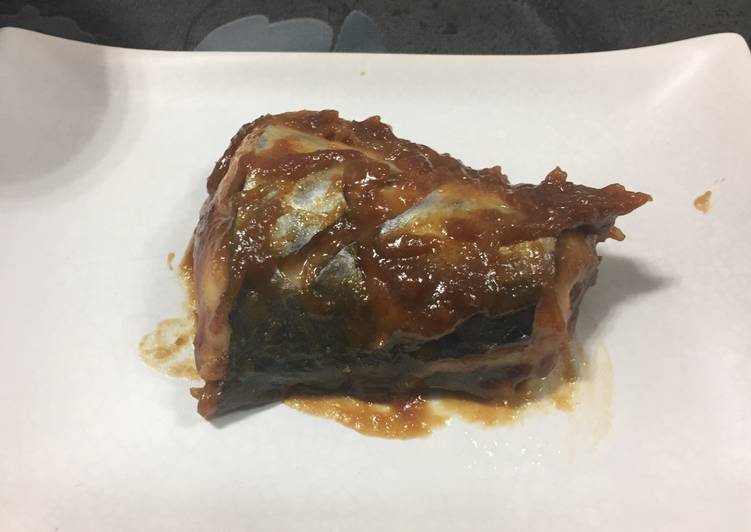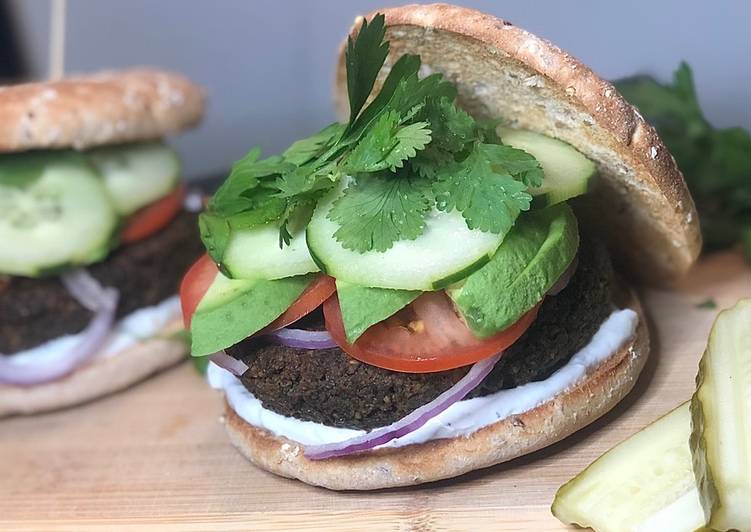
Hello everybody, it’s me again, Dan, welcome to my recipe page. Today, we’re going to prepare a special dish, fish of misoni ( spanish mackerel simmered in miso). It is one of my favorites food recipes. This time, I’m gonna make it a little bit tasty. This will be really delicious.
Fish of Misoni ( Spanish Mackerel Simmered in Miso) is one of the most popular of current trending foods in the world. It is simple, it is quick, it tastes yummy. It’s appreciated by millions every day. They’re nice and they look fantastic. Fish of Misoni ( Spanish Mackerel Simmered in Miso) is something that I’ve loved my whole life.
The featured fish will be Mackerel and the Japanese name is Saba. Does that ring a bell yet? You probably have seen Saba Shioyaki (Salt Broiled Mackerel) on a menu at a Japanese restaurant.
To begin with this recipe, we have to prepare a few ingredients. You can cook fish of misoni ( spanish mackerel simmered in miso) using 7 ingredients and 12 steps. Here is how you can achieve that.
The ingredients needed to make Fish of Misoni ( Spanish Mackerel Simmered in Miso):
- Make ready 2 Spanish Mackerel fillets (Batang Steak)
- Make ready 20 grams Ginger
- Make ready 4 tbsp Sake (cooking rice wine)
- Get 300 ml Water
- Make ready 1 tsp Japanese soup stock
- Get 4 tbsp Sugar
- Prepare 4 tbsp Miso
When the fish has cooked, carefully remove it from the pan and set it on to a baking tray lined with baking paper, skin side up. Continue making the sauce by slowly add in the miso paste and mix thoroughly so that clumps of miso aren't left over. Simmered Mackerel in Miso is called 'saba no misoni' (鯖の味噌煮). 'Saba' (鯖) means mackerel, 'misoni' (味噌煮) means simmered in miso, and 'no' (の) is equivalent to 'of'. Dishes simmered in miso flavoured sauce are often called misoni when a very small amount of sauce is left at the end of cooking.
Instructions to make Fish of Misoni ( Spanish Mackerel Simmered in Miso):
- Cut the spanish mackerel in half and score a cross on the surface of the skin. Julienne the ginger.
- Put the water and Sake in a frying pan. When it starts ti boil, put the Japanese soup stock. Place the spanish mackerel skin-side up and cook.
- When the edges of the spanish mackerel start getting white, add the ginger.
- When it boils again, turn the heat down to medium-law, and remove the scum. Add the sugar, put a drop lid on it and simmer for 8 minutes. (If you do not have the drop lid, cover aluminum foil on the spanish mackerel. The drop lid helps to make sure ingredients have an even flavor.)
- Add the miso by blending it with some of the stewing liquid. Occasionally scoop of the stewing liquid and pour it over the fish. Simmer for 7 minutes.
- When the stewing liquid reduces, take out the drop lid and shake the frying pan from side to side to coat the dish with the stew. Serve on the dishes.
- Spanish Mackerel (Batang Steak) SG$1.7/100grams at FairPrice
- Old Ginger SG$0.95/200g at FairPrice, RedMart etc
- Sake- Cooking Rice Wine SG$5~7/500ml at RedMart, Sakuraya, Dondon DONKI etc
- Japanese White Suger SG$3.5/kg at DonDon Donki
- Miso SG$4~8/pck at FairPrice, Coldstrage, RedMart, Dondon DONKI etc. (Plese use your favorite Miso)
- Japanese Soup stock SG 5~8/pck at FairPrice, Coldstrage, Dondon DONKI etc
Today's Oishiy recipe is '' Saba Misoni Simmered Mackerel with Miso''. Mackerel is popular fish in Japan can easily buy in supermarket. Easy to cook, common recipe are grilled, fried and this saba. Misoni is a classic Japanese way to cook fish, simmering in miso sauce. In Japan, Mackerel (Saba in Japanese) is commonly used for Misoni.
So that is going to wrap this up for this special food fish of misoni ( spanish mackerel simmered in miso) recipe. Thank you very much for your time. I’m sure you will make this at home. There is gonna be interesting food in home recipes coming up. Remember to bookmark this page in your browser, and share it to your family, friends and colleague. Thanks again for reading. Go on get cooking!

